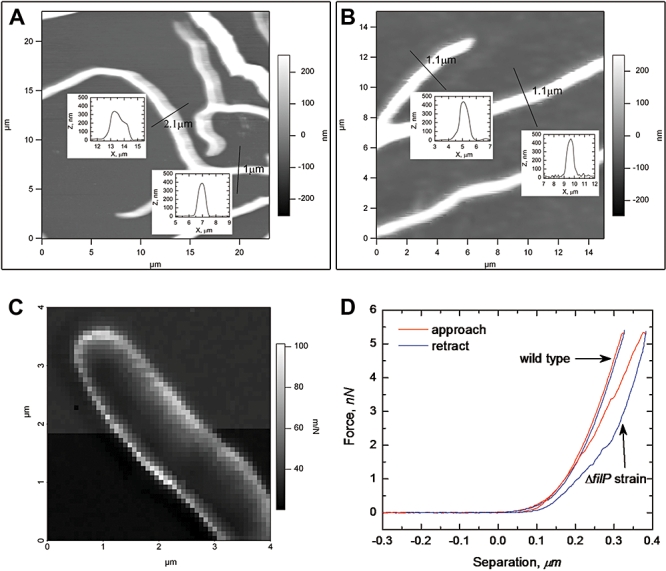Fig. 6.

Deletion of filP causes changes in the visco-elastic properties of S. coelicolor cells. A and B. Topological images of live hyphae of the wild-type M145 (B) and the †filP strain (A) grown as in Fig. 4. Insets show height profiles of the hyphae at positions marked with perpendicular lines, indicating that mutant hyphae undergo deformation in the imaging process, whereas wild-type hyphae maintain their form. C. An image of a tip of a wild-type hypha reconstructed using data from 80 × 80 force curves. Each pixel corresponds to a compliance value calculated from an individual force curve and depicted in greyscale, as shown by a scale bar to the right. Thus, areas of the sample characterized by dark pixels are relatively stiff (low compliance), and areas with lighter pixels are softer (high compliance). D. Single representative force curves of wild-type and †filP hyphae showing that wild-type hyphae are less compliant than those of the mutant. The hysteresis effect (manifested as a loop between the load and unload curves) was consistently present in all force curves of the mutant hyphae, and absent in those of the wild-type.
